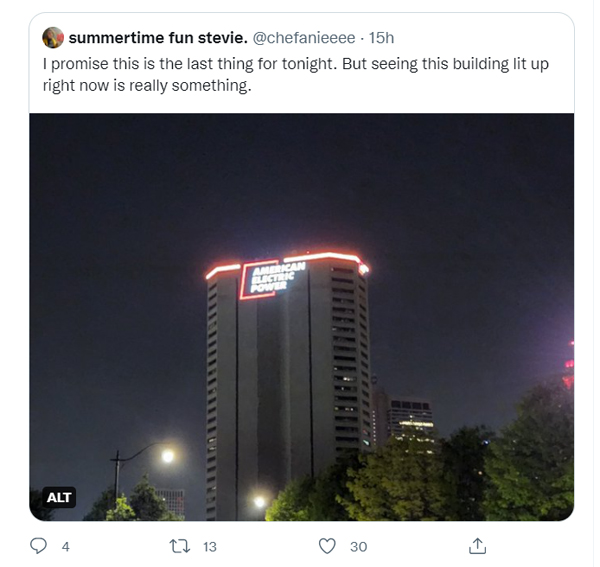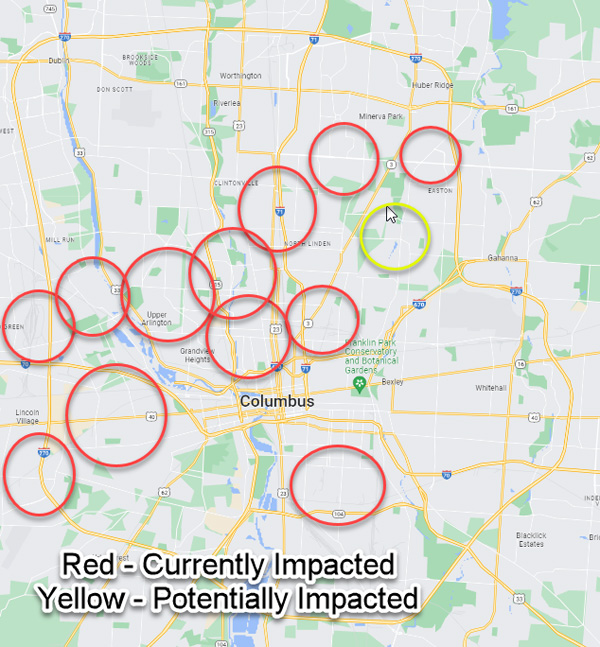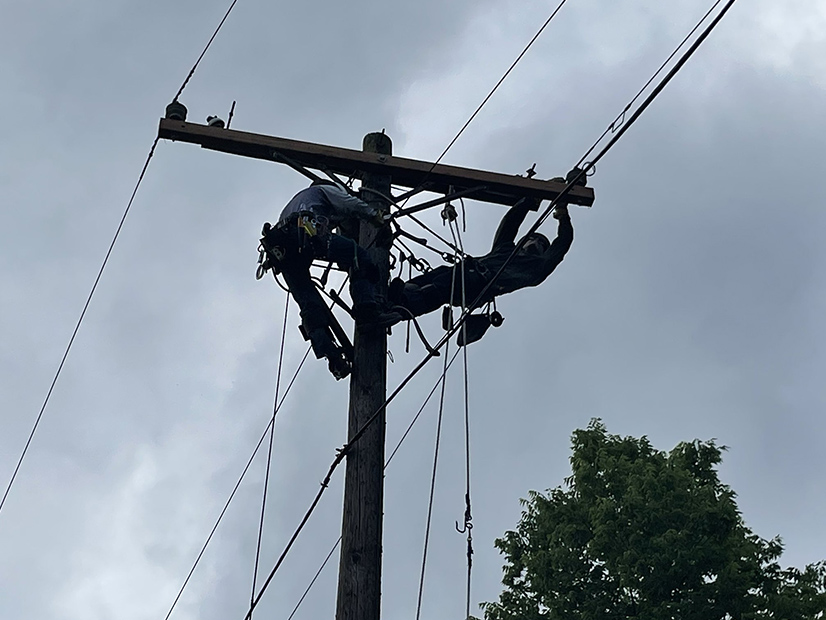American Electric Power (NASDAQ:AEP) customers in Ohio accused the company of racism Wednesday for cutting power to poor areas of Columbus while continuing service to richer suburbs in the wake of a severe windstorm.
AEP said it lost more than 100 poles during the storm Monday night, which saw wind gusts as high as 95 mph, and had downed power lines across its service territory Tuesday morning. The National Weather Service said the storm was a derecho, a windstorm driven by large, explosive thunderstorms.
Dozens of customers vented on Facebook and Twitter, questioning why the utility cut power to poorer, urban areas of Columbus, while richer suburban areas, and AEP’s headquarters building, had power.
Of the 135,000 customers lacking power at one point Wednesday afternoon, about 85,000 were in the Greater Columbus area — even though the city’s power lines were not damaged — The Columbus Dispatch reported. By 5:30 p.m., the outages had dropped to less than 127,0000.
 AEP Ohio was under attack on social media from those who questioned why the utility cut power to poor areas of Columbus while the richer suburbs and the AEP headquarters building had power. | summertime fun stevie via Twitter
AEP Ohio was under attack on social media from those who questioned why the utility cut power to poor areas of Columbus while the richer suburbs and the AEP headquarters building had power. | summertime fun stevie via TwitterA peak of 230,000 customers lost power Tuesday as PJM ordered load sheds on three 138-kV lines to prevent overloads and cascading outages. (See related story, PJM Orders Load Sheds in AEP Following Storms.)
PJM ordered another load shed at 11:40 a.m. Wednesday to mitigate an N-5 cascade analysis on the 138-kV Kenney-Roberts line. Earlier in the day, PJM extended its Hot Weather Alert for its Western region, including AEP, through the end of Thursday.
AEP restored power over Tuesday night to some customers in central Ohio but turned it off again Wednesday as demand rose, saying customers previously affected might see additional outages through Thursday. It asked customers to reduce their electric usage between the peak hours of noon and 7 p.m.
In an update at 7:30 p.m., AEP said its crews had made significant progress repairing damage to the transmission lines serving Columbus and that it expected to begin restoring power to substations and customers in the early morning hours.
“All customers who were impacted by the emergency outage will have their power restored by 5 a.m. on Thursday, June 16,” AEP said. “We expect that these repairs will allow the power grid in the Columbus area to operate as it normally would, even as temperatures rise.”
The forecast for Thursday calls for temperatures in the mid-90s.
“I’ve been with AEP 41 years, and I don’t remember anything like this,” Jon Williams, AEP Ohio’s managing director of customer experience, told the Dispatch. “This is a very, very unusual occurrence.”
Outrage
AEP said the outages in Columbus were necessary because the storm damaged transmission lines in eastern and southeastern Ohio that serve the city.
“This is criminal. You intentionally cut power in low-income areas. How obvious is your prejudice?” wrote one woman on AEP Ohio’s Facebook page. “Good ole fashion redlining practices determined whose power was cut. No way they will last two days in that kind of heat.”
At least 11 cooling centers were opened in central Ohio as temperatures hit the mid-90s and the heat index hit 105.
 Columbus, Ohio, areas affected by outages Wednesday afternoon. | AEP Ohio
Columbus, Ohio, areas affected by outages Wednesday afternoon. | AEP Ohio“Shout out to AEP Ohio for purposely cutting power to, almost exclusively, the poorest parts of Columbus during today’s extremely hot weather,” wrote one resident on Twitter.
“Apparently AEP is intentionally cutting power to Columbus area residents in 90-degree weather to protect the grid’s integrity,” tweeted a woman who said she had been without power for a few hours. “Funny enough, power hasn’t been cut to anyone in Dublin, Bexley or the like. Hmm … wonder why?”
Williams and other AEP officials insisted the outages were dictated by where lines were overloaded, not by any favoritism.
“There’s no tie whatsoever to customers, or what type of customers,” Williams told the Dispatch. ‘We’re not picking and choosing locations.”
The utility said it was working to maintain power for critical facilities like hospitals and emergency services.
It said it had to react “within seconds” to protect the system. “Unfortunately, there simply was not enough time to notify customers before taking the necessary actions to protect the grid,” AEP said in a statement on its website.
It said it was unable to use rolling blackouts to reduce stress on the system. “In this case, the affected transmission lines cannot be brought back online until other lines that feed into the area are repaired from storm damage and returned to service,” it said.
The Columbus branch of the NAACP released a statement demanding more information from AEP about its load-shed process.
Once power is restored, the Public Utilities Commission of Ohio will conduct an “after-action report to understand what it is that happened,” said PUCO spokesman Matt Schilling.
Schilling said all six of the state’s electric distribution utilities had significant outages from the storm. “Many [of the utilities] are getting close to being fully restored,” he said in an interview Wednesday. “By and large, the central Ohio area was hit hardest, which is AEP service territory.”
Merrilee Embs, spokesperson for the Ohio Consumers’ Counsel, said the office hopes “for the safety of the many central Ohio consumers losing electricity in the extreme heat and for the AEP workers restoring electricity.
“Job-one is to restore power safely and ASAP for thousands of Ohio families,” Embs said in a statement. “… The PUCO should investigate to learn what happened and why — and for lessons learned. Importantly, the PUCO should allow the public to be heard in the process, given that so many Ohioans have been at risk.”



